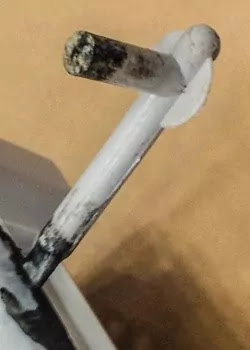Injection molding is a widely used manufacturing process for plastic products. Almost 30% of plastic products are manufactured by injection molding. There are various Injection molding defects which affect the quality of the product. Let's have a look at some of the injection molding defects, their causes, and remedies
FLOW LINES
These are lines or a wavy pattern of different coloration than the surrounding material. Ther might also appear as ring-shaped or wavefronts near gates, etc.
Causes
Consequences
Remedies
- Increase the injection speed and pressure so that the material fills the cavity before it undergoes premature cooling. We can increase the diameter of the nozzle to increase the pressure.
- Increasing the material temperature will also avoid the premature cooling of the material. However, we should not increase the temperature too high as it may cause burn marks.
- Mold design
- Providing round corners in areas of varying thickness may prevent a sudden change in the velocity of the material.
- The mold design should allow a smooth flow of material to prevent drastic variation.
- Relocate mold gates at a distance from the mold coolant.
BURN MARKS
Causes
Over heating of the mold cavity, excessive injection speed and temperatures of materials causes burn marks
Consequences
Burn marks won’t affect the integrity of the part but are aesthetically unpleasing. Burn marks may affect the part of the burning is to an extent where it would degrade the material.
Remedies
- Lower material temperature to avoid overheating
- Enlarge escape vents and gates to allow the trapped air to escape.
- Provide a smooth flow of material, to avoid trapped air.
- Shorten the cycle time so that if any air is trapped it won’t have time to overheat.
Sink marks
Causes
When the the material in the interior cools rapidly its contracts, cause inward pulling of the outer material which is still in the molten state. This results in sink marks on the surface.
Consequences
Although sink marks don’t affect the product strength or function, they drastically affect the quality and aesthetics of the product.
Remedies
- Make part walls as uniform as we can.
- Make ribs instead of increasing wall thickness where strength is required.
- Place gates locations to allow thicker sections to fill first.
- Increase holding pressure and time to allow the material at the surface to cool properly.
Vacuum voids / Air pockets
Trapped air bubbles or empty spaces that appear in the finished product are air pockets or voids
Cause
Inadequate pressure to force trapped air to escape from the mold cavity is the major cause of this. Also, if the material near the mold walls cools too quickly it causes shrinkage and pulls the material outwards which causes voids.
Consequences
Manufacturers consider these as a minor defect, but if the extent is large it may hamper the strength and function of the product.
Remedies
Raise the injection pressure to force the air out.
Ensure uniform cooling
Jetting
It is a visible flow pattern on the product mostly as lines over the surface. These appear similar to flow lines defects.
Causes
Jetting is caused mainly due to excessive injection pressure and premature cooling of the initial jet. The jet squirts out of the nozzle and cools over the mold walls. This cooled material is then dragged by the further incoming molten material causing the pattern.
Consequences
Remedies
Decrease the injection pressure to provide a smoother flow of the material into the cavity.
Placing the mold gate in such a way that the material is filled across the mold rather than through the length.
Increase mold temperature to prevent solidification of the initial jet.
SHORT SHOT
Causes
Narrow or blocked gates cause improper filling of the cavity, inadequate venting resulting in back pressure of air, Material too viscous or the mold too cool that it solidifies even before the complete filling of the cavity.
Consequences
Incomplete or a missing part of the finished product
Remedies
Provide wider channels for the mold to ensure proper flow.
Balance the flow paths so that they fill with equal pressures
Select a less viscous material
Increase the temperature to increase the viscosity
Burrs or flash
Small protrusions over the surface of the finished products are called burrs or flash defect.
Causes
This is mainly related to mold health and mold design. Worn mold or improper clamping of the mold helps material escape the cavity, poor design of mold causing improper fitting, gaps, etc. Improper holding pressures also aids in this.
Consequences
This is generally considered as minor defect, but adds to reworking on the product for critical requirements, increasing manufacturing time.
Remedies
Proper design of the mold with suitable holding pressure can reduce this defect.
Other defects
Strings – These are string link remains at the end of the product from the previous shot. Caused mainly due to high nozzle temperature, and uncooled material at the entry of the gate.
Blisters – Raised layers on the surface are called blisters. This occurs when the material remains molten for a long time.
Welding lines – These are partition like lines which occur due to cooling of the material after splitting off when the are converged. This is a result of low material bonding and hampers the strength of the product.














0 comments:
Post a Comment